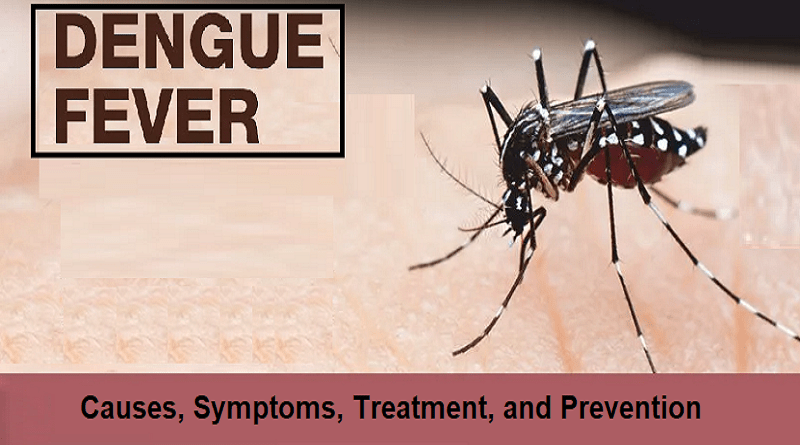Mosquito-borne disease: Dengue Fever Causes, Symptoms, and Prevention
Dengue fever is a mosquito-borne disease widespread in tropical and subtropical regions. The virus responsible for causing dengue (dengue virus), is transmitted to humans primarily through the bites of infected female mosquitoes, particularly the Aedes aegypti mosquito. In this article, we will explore the key aspects of dengue fever, including its causes, symptoms, and preventive measures.
Introduction
Dengue fever is a prevalent mosquito-borne viral infection with a significant public health concern, particularly in tropical and subtropical regions worldwide. It is caused by the dengue virus and is transmitted to humans primarily through the bites of infected female Aedes mosquitoes.
The dengue virus belongs to the Flavivirus genus with four distinct serotypes (DEN-1, DEN-2, DEN-3, and DEN-4). A person can be infected with any of these serotypes. Subsequent infections with different serotypes can lead to more severe forms of the disease.
Key points about Dengue fever:
- Transmission: The Aedes aegypti mosquito is the primary vector for dengue. This mosquito is also responsible for transmitting other viruses like Zika and chikungunya. Dengue is not directly transmitted from person to person.
- Symptoms: Dengue fever symptoms can range from mild to severe including high fever, severe headache, pain behind the eyes, joint and muscle pain, rash, and mild bleeding.
* High Fever: Sudden onset of a high fever is a hallmark symptom of dengue fever.
* Severe Headache: Intense headaches, often accompanied by pain behind the eyes, are common.
*Joint and Muscle Pain: Dengue can cause severe joint and muscle pain, earning it the colloquial name “breakbone fever.”
* Rash: A rash may develop on the skin, often appearing a few days after the onset of fever.
* Mild Bleeding: Some individuals may experience mild bleeding, such as nosebleeds or gum bleeding. - Severity: While most cases of dengue fever are mild and can be managed with supportive care, severe forms of the disease (dengue hemorrhagic fever and dengue shock syndrome) can be life-threatening and require prompt medical attention.
- Geographic Spread: It is prevalent in many parts of the world, especially in tropical and subtropical areas of Southeast Asia, the Pacific Islands, the Caribbean, and Central and South America.
- Treatment: There is no specific antiviral treatment for dengue. Treatment is mainly supportive, focusing on managing symptoms and preventing complications. Hydration is crucial in severe cases.
Prevention
Preventing dengue fever revolves around minimizing exposure to mosquito bites and eliminating mosquito breeding sites. Key preventive measures include:
- Use of Insect Repellent: Applying insect repellent on exposed skin reduces the risk of mosquito bites.
- Protective Clothing: Wearing long sleeves, pants, and socks can provide an additional physical barrier against mosquito bites.
- Mosquito Nets: Using bed nets treated with insecticides helps protect individuals from nighttime mosquito exposure.
- Eliminating Standing Water: Aedes mosquitoes breed in standing water. Removing or treating containers that collect and hold water can reduce mosquito breeding sites.
Vaccination
There is a dengue vaccine available. The vaccine is not universally recommended for everyone and is often considered for individuals with a history of dengue exposure.
Conclusion
Dengue fever remains a significant global health challenge, impacting millions of people each year. Understanding the causes, symptoms, and preventive measures is vital for individuals living in or traveling to dengue-endemic regions. Public health efforts, including mosquito control and community education, play a crucial role in mitigating the impact of this mosquito-borne disease. Stay informed, take preventive measures, and seek prompt medical attention if dengue symptoms arise.




